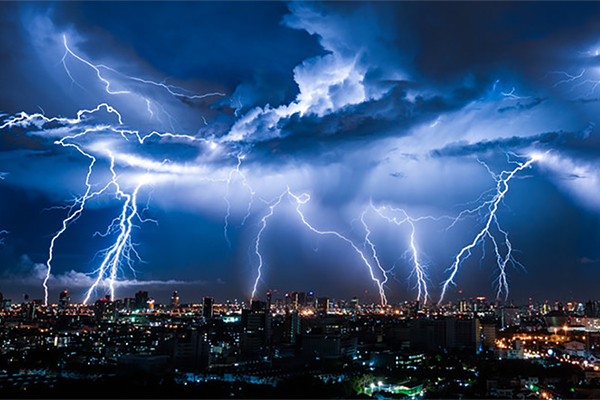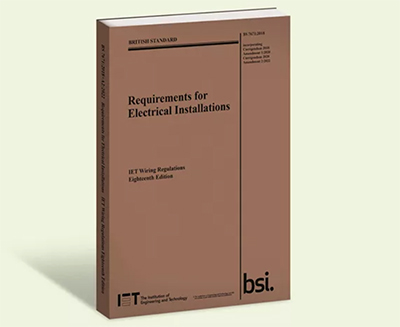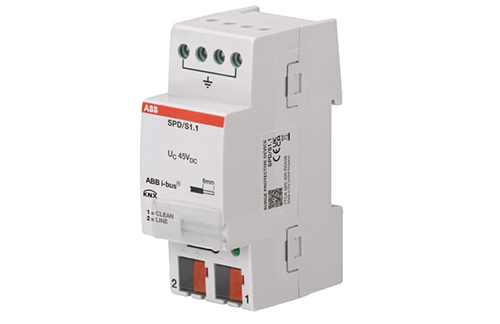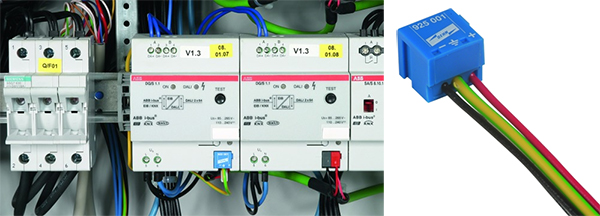
With experts warning of increasing lightning strikes due to climate change, Simon Buddle makes the case for overvoltage protection of mains and low-voltage systems in the home.
Historically the weather in Europe has been, by and large, middle of the road. The summer of 1976 saw UK temperatures more than 30oC for over two weeks. I spent that summer strawberry picking (or rather, eating) and floating around on a lorry inner tube on the local river. Life does not get much better. Back then, that was very much the exception. Nowadays extreme weather events are a regular occurrence. The floods in western Germany last year being one obvious and tragic example. It feels like heavy storms are much more commonplace nowadays. And with those storms comes the risk of lightning. And with lightning comes the very real risk of damage to homes and electrical systems.

If the home is hit directly there is not much that we can do, such is the destructive force of the strike. However, if the strike hits the ground it may travel via pipes or external cabling to the house and in that case an SPD (Surge Protection Device) will save the electrical installation. In the UK, this has been recognised and enforced in the latest amendment to the Wiring Regulations.
Wiring regulations
The Wiring Regulations BS7671: Amendment 2: 2022 has seen Regulation 443.4 Overvoltage control replaced by Regulations 443.4.1 and 443.4.2. They are described as follows:
443.4.1 Transient overvoltages because of indirect lightning strikes
Protection against transient overvoltages shall be provided where the consequence caused by the overvoltage could result in:
• Severe injury to, or loss of human life.
• Failure of a safety service, as defined in Part 2.
• Significant financial or data loss.
For all other cases, protection against transient overvoltages shall be provided unless the owner of the installation declares it is not required due to any loss or damage being tolerable, and they accept the risk of damage to equipment and any consequential loss. Note: Part 2 defines a safety service as ‘an electrical system for electrical equipment provided to protect or warn persons in the event of a hazard, or essential to their evacuation from a location.’
443.4.2 Transient overvoltages caused by equipment
Protection against overvoltages shall be considered in the case of equipment likely to produce switching overvoltages or disturbances exceeding the applicable rated impulse voltage of equipment according to table 443.2, e.g., where inductive or capacitive equipment such as motors, transformers, capacitor banks, storage units, or high current loads are installed.

Safety of KNX distribution boards
The key point for anyone building and installing a distribution board is that 443.4.1 states that ‘in all other cases, protection shall be provided unless the owner declares that such protection is not required due to any loss being tolerable.’
Therefore, outside of the three defined areas, SPDs must be fitted, unless expressly excluded by the owner of the installation.
This makes our world amazingly simple. Fit SPDs to KNX distribution boards! Of course, one could argue that this should be done at the main consumer unit by the electrician, and you would be right. However, for the cost of the SPD, I would like to protect my panel installation and the equipment therein.
As KNX professionals, we should consider surge protection for two areas: 230V incoming supply and KNX bus. Within the KNX distribution board, the main incoming supply should be protected. Whether single-phase or three-phase, there are lots of options available. SPDs come in three distinct types:
• Type 1 SPD installed at the origin, e.g., main distribution board.
• Type 2 SPD installed at sub-distribution boards
(Combined Type 1 & 2 SPDs are available and are usually installed in consumer units).
• Type 3 SPD installed close to the protected load. They must only be installed as a supplement to Type 2 SPD.
We need to use Type 2 devices.
Remember that the job of the SPD is to protect against overvoltage spikes getting into the electrical supply. These voltage spikes can be hundreds of volts. The SPD is a varistor which reacts to excess voltage. If the voltage exceeds 250V, the varistor switches on almost instantly, grounding the voltage spike and thereby protecting the electrical installation. It is important that the correct cable sizes are used, with 6mm or 10mm required (subject to system) from SPD-to-earth connection. SPDs do wear overtime and usually have a green and red indicator to enable visible health checks. That is one to add to the list of maintenance checks.
KNX bus SPDs
Whilst the voltages on the bus are much smaller, induced voltage and or spikes can still give rise to damage to actuators connected to the bus. Both DEHN and ABB make SPDs that you can wire onto the bus.


Conclusion
One of the great joys of KNX is the open modular system architecture, but with this comes cabling interconnects at mains voltage and bus voltage level. Protecting the installation, the customer’s investment, and our hard work, should be a prerequisite for any good installation. With the new amendment in UK wiring regulations, overvoltage protection is now a requirement for the mains supply, unless the customer explicitly states that it is not required. We live in a world where the risks are increasing, and for me, adding in an SPD is money well spent. It will simply be incorporated into every quote.
Simon Buddle CEng MIET, is a consultant for Future Ready Homes, a specialist in BMS and ELV services system design.












